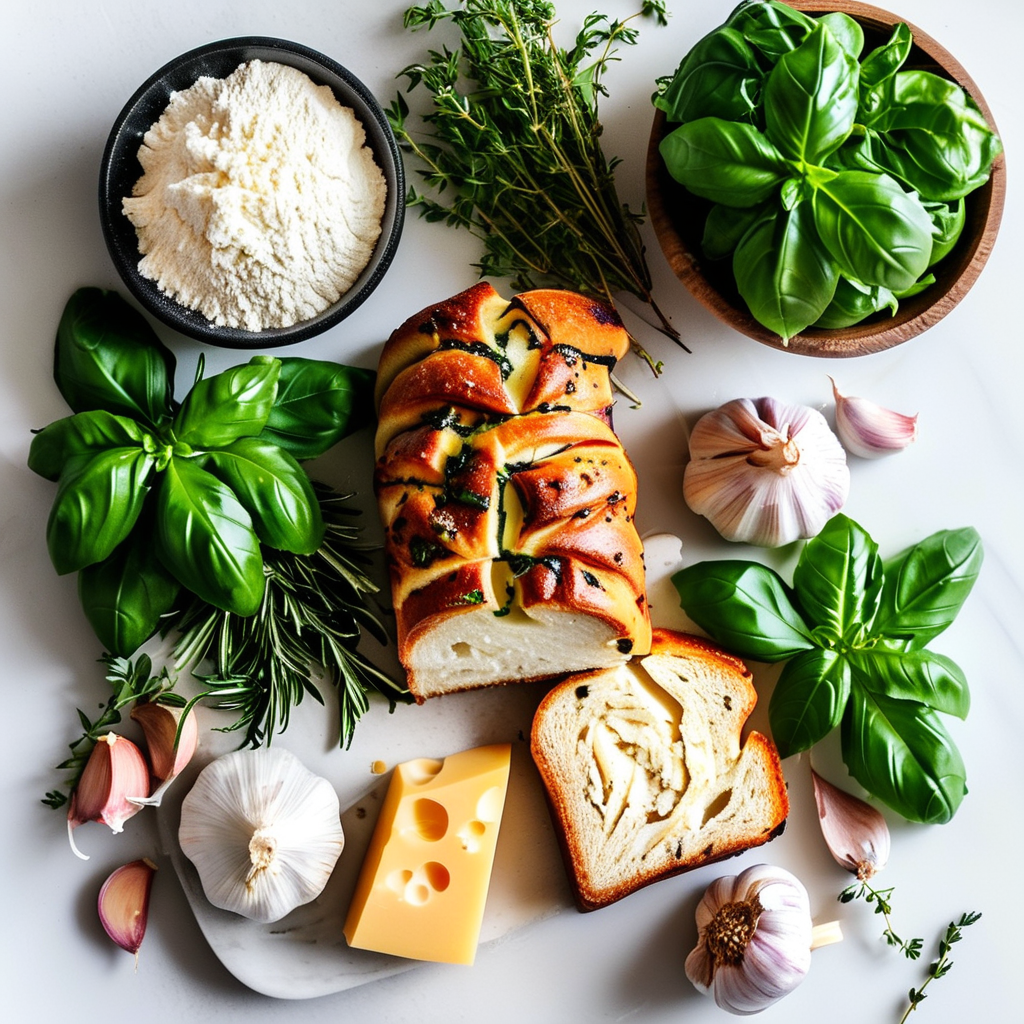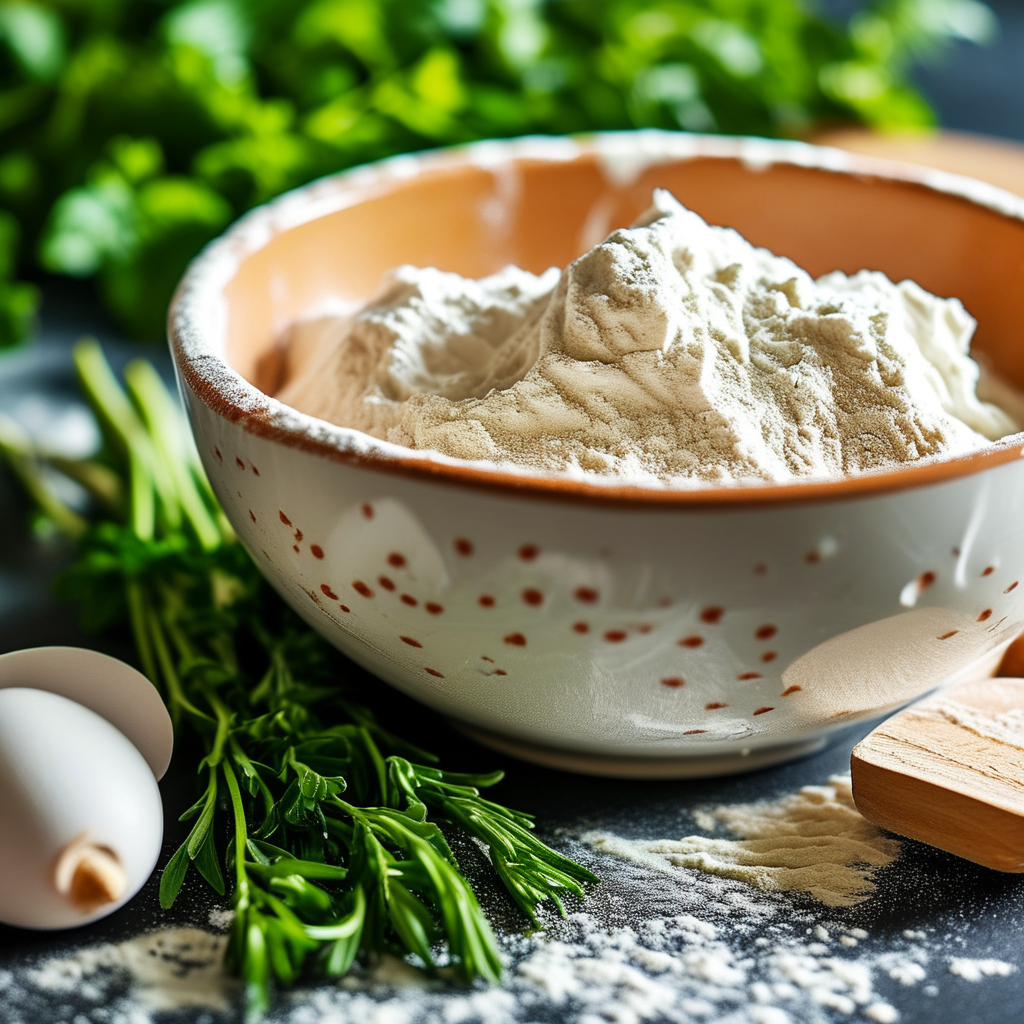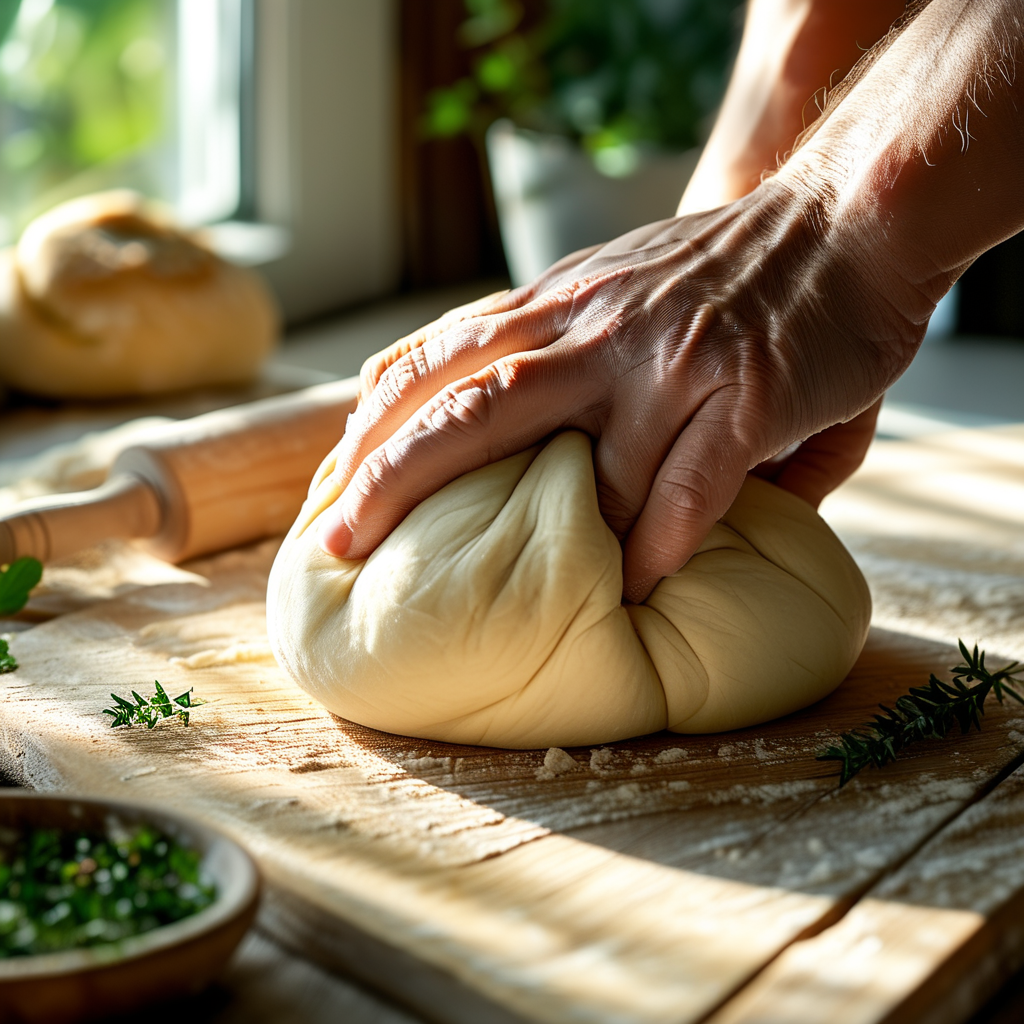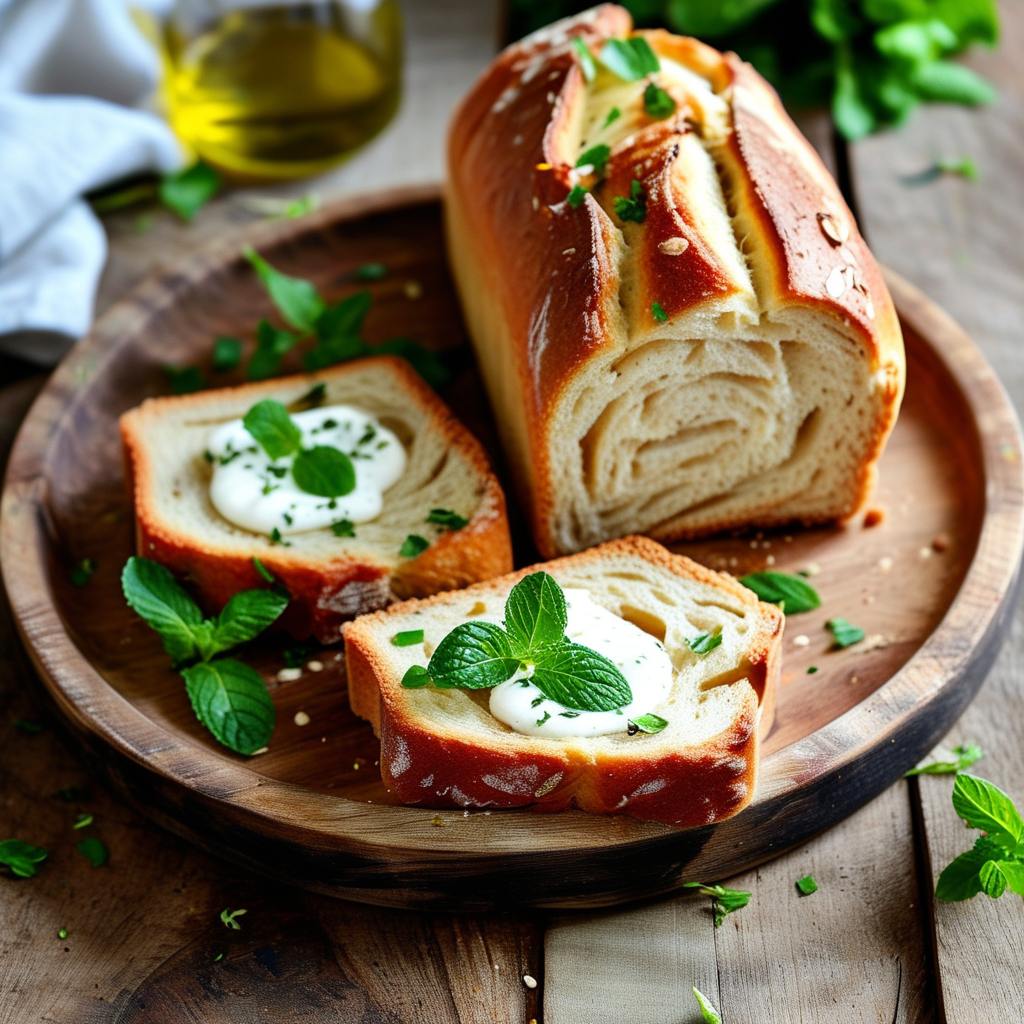Are you ready to elevate your baking skills? A herb bread recipe can turn a simple meal into a gourmet experience. With its aromatic flavors and delightful texture, herb bread is an essential addition to any kitchen. This article will guide you step-by-step from ingredients to serving suggestions, making your herb bread adventure both rewarding and fun.
Before we dive into the recipes, let’s explore what herb bread is and why it has become a household favorite. Whether you’re hosting a dinner party or preparing a family meal, herb bread pairs perfectly with a variety of dishes. Moreover, its versatile nature allows for endless customization, ensuring that every loaf can be unique and tailored to your personal taste.
For those looking to expand their culinary knowledge, check out this Macomb’s Irish Soda Bread Recipe for a classic twist. This comparison will help you appreciate the distinct qualities that herb bread brings to the table.
Understanding Herb Bread and Its Popularity
Herb bread is not just any bread; it’s a celebration of flavors. The popularity of herb bread comes from its versatility. Whether served as a side dish or as the main attraction, herb bread has won the hearts of many food lovers. Its unique combination of fresh herbs infuses the bread with aromatic notes that enhance any meal.
Additionally, herb bread caters to a variety of dietary preferences. It can be made gluten-free or vegan with simple ingredient substitutions, making it accessible to a broader audience. Its ability to complement both simple and complex dishes—from soups and salads to hearty stews and gourmet entrees—further solidifies its status as a kitchen staple.
Herb bread’s rising popularity is also attributed to its health benefits. Fresh herbs not only add flavor but also bring nutritional value, including antioxidants and essential vitamins. This makes herb bread a healthier alternative to many commercial breads laden with preservatives and artificial additives.
For more insights on herb-infused dishes, visit Super Delicious Zuppa Toscana. Understanding how herbs can elevate various recipes will inspire you to experiment more in your cooking endeavors.
Essential Ingredients for Herb Bread
- Main ingredients: Flour, Yeast, Water
- Fresh Herbs: Basil, Rosemary, Thyme
- Optional Add-ins: Cheese, Garlic, Sun-dried Tomatoes

Choosing the right herbs is crucial. Common herbs like basil and rosemary can elevate the taste of your bread. For seasonal variations, consider using summer herbs such as oregano or winter herbs like sage. Each herb brings its own unique flavor profile, allowing you to customize your bread to complement different dishes. For instance, rosemary adds a pine-like aroma, while thyme offers a subtle earthiness.
When selecting herbs, opt for fresh over dried whenever possible. Fresh herbs provide a more vibrant flavor and a visually appealing look to your bread. If fresh herbs are unavailable, dried herbs can be used as a substitute; however, remember to adjust the quantity accordingly, as dried herbs are more concentrated in flavor.
The optional add-ins like cheese, garlic, and sun-dried tomatoes introduce additional layers of flavor and texture. Cheese can add a savory depth, garlic provides a robust kick, and sun-dried tomatoes contribute a sweet-tart note, making your herb bread even more delicious and versatile.
Methods of Making Herb Bread
There are several methods to bake herb bread, each with its own advantages. Choosing the right method depends on your experience level, available equipment, and the time you have. Let’s explore these methods in detail:
Traditional Hand Kneading
This method requires time and effort but yields a delightful result. Knead your dough for at least 10 minutes to develop gluten, which gives the bread its structure and chewiness. Hand kneading allows you to feel the dough’s texture and ensures that the ingredients are well incorporated.

Moreover, hand kneading can be a therapeutic and enjoyable process. It allows you to connect with the dough, making the baking experience more personal and satisfying. For those who enjoy traditional baking techniques, this method is perfect.
Using a Stand Mixer
A stand mixer can make the job easier and save time, especially for those who are busy or prefer a less hands-on approach. Simply mix the ingredients and let the mixer do the hard work for you. Using a stand mixer ensures consistent dough texture and thorough mixing, which is essential for a well-risen loaf.
Additionally, stand mixers often come with various attachments that can aid in the bread-making process. This method is particularly beneficial for those who bake frequently, as it reduces the physical effort involved and speeds up the preparation time.
No-Knead Method
This method is perfect for beginners or those who prefer a more relaxed baking process. Just mix the ingredients and let the dough rise overnight. You’ll wake up to the smell of fresh bread! The no-knead method relies on a longer fermentation time to develop the bread’s structure and flavor naturally.

Moreover, this method requires minimal hands-on time, making it ideal for those with a busy schedule. The extended rising period enhances the bread’s flavor, resulting in a more complex and satisfying taste profile.
Baking in a Dutch Oven
Using a Dutch oven can help create steam, which results in a crusty exterior and moist interior. The heavy lid traps the steam released by the dough, mimicking the conditions of a professional bread oven. This technique ensures an even bake and a beautiful, golden-brown crust.
Furthermore, baking in a Dutch oven allows for flexibility in cooking times and temperatures. You can experiment with different settings to achieve your desired crust thickness and bread texture. This method is excellent for those seeking a restaurant-quality loaf at home.
- Keep your ingredients fresh.
- Experiment with different herbs.
- Monitor baking time closely.
- Choose the right baking method for your needs.
- Allow sufficient rising time for optimal texture.
Popular Herb Bread Recipes
Here are some favorite variations of herb bread that cater to different palates and occasions:
- Swirled Garlic Herb Bread: A rich, garlicky bread that’s perfect for dipping in soups or olive oil. The swirls of garlic butter add a savory depth, making each slice irresistible.
- Fresh Herb Bread: A simple recipe that highlights the freshness of herbs. This bread is light, aromatic, and pairs wonderfully with cheese platters and fresh salads.
- Easy Herbed Peasant Bread: Rustic and full of flavor, this bread incorporates hearty herbs and a denser crumb, making it ideal for hearty stews and robust dishes.
- Flavorful Herb and Cheese Bread: A blend of multiple herbs and cheeses for the daring cook. The addition of cheese introduces a creamy richness that complements the herbaceous notes perfectly.
Each of these recipes offers a unique twist on the classic herb bread, allowing you to explore different flavor combinations and textures. Whether you prefer a subtle infusion of herbs or a bold, savory loaf, there’s a recipe here to suit every taste.
Tips for Perfect Herb Bread
Want to ensure your herb bread turns out perfectly every time? Here are some valuable tips to help you achieve bakery-quality results:
- Choosing Herbs: Use fresh herbs for the best flavor. Fresh herbs retain their vibrant flavors and add a burst of color to your bread. If using dried herbs, remember to reduce the quantity by about one-third to avoid overpowering the bread.
- Proofing Dough: Ensure your dough rises well to achieve the right texture. Proper proofing allows the yeast to ferment effectively, resulting in a light and airy crumb. Keep the dough in a warm, draft-free environment to facilitate optimal rising.
- Baking Temperature and Time: Maintain consistent oven heat for ideal results. Preheat your oven thoroughly before baking and use an oven thermometer to ensure accurate temperatures. This consistency helps in developing a perfect crust while keeping the interior moist.
- Creating Steam: For a crisp crust, place a pan of water in the oven during the first few minutes of baking. The steam helps in achieving that desirable crunchy exterior while keeping the inside soft and tender.
- Scoring the Dough: Make shallow cuts on the surface of the dough before baking to control where the bread will expand. This technique not only enhances the bread’s appearance but also prevents unexpected cracking.
- Storing Leftover Bread: Keep it wrapped to maintain freshness. Store your bread in a paper bag or wrap it in a clean kitchen towel to allow it to breathe while preventing it from drying out too quickly. For longer storage, consider freezing the bread.
Implementing these tips will significantly improve your herb bread baking experience, ensuring each loaf is flavorful, well-textured, and visually appealing.
Serving Suggestions and Pairings
Herb bread is versatile and pairs well with a wide range of dishes. Here are some ideas to inspire your meal planning:
- Ideal Meals: Soups, salads, and pasta dishes. Herb bread serves as a perfect accompaniment to creamy soups like tomato bisque or hearty stews, enhancing the overall dining experience.
- Creative Serving Ideas: Use it for bruschetta or sandwiches. Toast slices of herb bread and top them with fresh tomatoes, mozzarella, and basil for an Italian-inspired appetizer.
- Dipping Delight: Serve herb bread with olive oil and balsamic vinegar for a simple yet elegant appetizer that guests will love.
- Breakfast Boost: Pair slices with avocado, eggs, or smoked salmon for a nutritious and flavorful breakfast option.

Moreover, herb bread can be transformed into savory French toast or used as a base for open-faced sandwiches, offering endless possibilities for creative and delicious meals.
Troubleshooting Common Herb Bread Issues
Even experienced bakers encounter challenges. Here are some troubleshooting tips to help you overcome common herb bread issues:
- Dense or Hard Bread: Make sure dough is properly kneaded. Insufficient kneading can prevent adequate gluten development, resulting in a dense loaf. Knead until the dough is smooth and elastic to ensure a light and airy texture.
- Underbaked or Overbaked: Adjust your oven temperature and keep an eye on the baking time. Underbaked bread may be doughy inside, while overbaked bread can become too dry. Use a thermometer to check for an internal temperature of around 190°F (88°C).
- Flavorless Bread: Increase herb quantities if flavors are too subtle. Additionally, ensure that the herbs are fresh to maximize their aromatic properties. Experiment with different herb combinations to find your preferred flavor balance.
- Crust Too Thick or Too Thin: Modify baking time or temperature accordingly. For a thicker crust, bake at a higher temperature or extend the baking time slightly. For a thinner crust, reduce the oven temperature or minimize baking time.
- Dough Not Rising: Ensure that your yeast is active and the dough is placed in a warm environment. Old or inactive yeast can hinder the rising process. To check yeast activity, dissolve it in warm water with a pinch of sugar; it should become frothy within 10 minutes.
By addressing these common issues, you can consistently produce herb bread that meets your expectations and delightfully complements your meals.
FAQ Section
- What herbs work best in bread recipes? Fresh herbs such as rosemary and thyme are popular choices. These herbs offer robust flavors that infuse beautifully into the dough. Other excellent options include basil, oregano, sage, and parsley, each bringing its own unique taste profile.
- Can I use dried herbs instead of fresh? Yes, but use about one-third of the amount, as dried herbs are more concentrated. For example, if a recipe calls for 3 tablespoons of fresh herbs, use only 1 tablespoon of dried. This adjustment ensures that the herb flavors are balanced and not overpowering.
- How do I store my herb bread? Wrap it in plastic or foil and store at room temperature. This method keeps the bread fresh for several days. For longer storage, place the wrapped bread in a freezer-safe bag and freeze it. Thaw at room temperature before serving.
- Can I freeze herb bread? Yes, herb bread freezes well; just make sure it’s wrapped tightly. Freezing preserves the bread’s freshness and flavor. To enjoy, slice the bread before freezing so you can easily take out individual servings as needed.
- What can I substitute for yeast in herb bread? You can use baking powder or baking soda as a substitute for quick, unsweetened herb bread. Alternatively, for a more traditional approach, try making a sourdough starter to provide natural leavening.
- How can I make my herb bread gluten-free? Use a gluten-free flour blend that mimics the properties of wheat flour. Ensure that all other ingredients are also gluten-free. Additionally, xanthan gum or another binding agent may be necessary to achieve the right texture.
Conclusion
Making herb bread is not only satisfying but also a delightful way to enjoy the blend of fresh herbs and warm bread. Its versatility allows it to complement a wide range of dishes, from casual meals to elegant dinners. Now that you have all the tips, ingredients, and methods, it’s time to head to your kitchen and start baking! Share your herb bread creations with friends and family today, and enjoy the rich flavors and aromas that only homemade bread can offer.
Additional Resources
For further inspiration, check out these related articles: